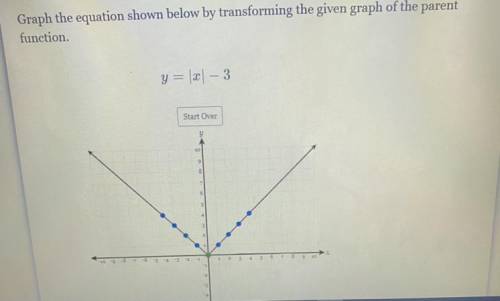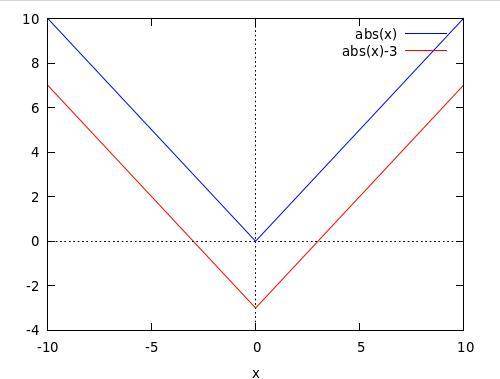Graph the equation shown below by transforming the given graph of the parent
function.
...

Mathematics, 11.06.2021 23:20 tursunovarukhshona
Graph the equation shown below by transforming the given graph of the parent
function.


Answers: 1
Another question on Mathematics

Mathematics, 21.06.2019 16:00
The level of co2 emissions, f(x), in metric tons, from the town of fairfax x years after they started recording is shown in the table below. x 2 4 6 8 10 f(x) 26,460 29,172.15 32,162.29 35,458.93 39,093.47 select the true statement.
Answers: 1

Mathematics, 21.06.2019 16:50
The rate of decay of a radioactive substance depends upon the amount present initially. the mass y (mg) of the radioactive substance cobalt-60 present in a sample at time t (years) is represented by the exponential equation y=50e −0.1315 t . answer the following questions in complete sentences. 1. how does the exponential equation above compare to the equation for simple interest that is compounded continuously? explain the similarities. 2. what is the initial amount of cobalt-60 in the sample? 2. how much cobalt-60 is left after 8.4 years? show your work. 3. what would be the y-intercept of the graph? what does it represent? 4. after how many years will the amount of cobalt-60 left be 6.25 mg? explain what happens to the cobalt-60 after 50 years? 5. discuss some “real-world” examples and uses of cobalt-60
Answers: 1

Mathematics, 21.06.2019 19:30
Cone w has a radius of 8 cm and a height of 5 cm. square pyramid x has the same base area and height as cone w. paul and manuel disagree on how the volumes of cone w and square pyramid x are related. examine their arguments. which statement explains whose argument is correct and why? paul manuel the volume of square pyramid x is equal to the volume of cone w. this can be proven by finding the base area and volume of cone w, along with the volume of square pyramid x. the base area of cone w is π(r2) = π(82) = 200.96 cm2. the volume of cone w is one third(area of base)(h) = one third third(200.96)(5) = 334.93 cm3. the volume of square pyramid x is one third(area of base)(h) = one third(200.96)(5) = 334.93 cm3. the volume of square pyramid x is three times the volume of cone w. this can be proven by finding the base area and volume of cone w, along with the volume of square pyramid x. the base area of cone w is π(r2) = π(82) = 200.96 cm2. the volume of cone w is one third(area of base)(h) = one third(200.96)(5) = 334.93 cm3. the volume of square pyramid x is (area of base)(h) = (200.96)(5) = 1,004.8 cm3. paul's argument is correct; manuel used the incorrect formula to find the volume of square pyramid x. paul's argument is correct; manuel used the incorrect base area to find the volume of square pyramid x. manuel's argument is correct; paul used the incorrect formula to find the volume of square pyramid x. manuel's argument is correct; paul used the incorrect base area to find the volume of square pyramid x.
Answers: 3

Mathematics, 21.06.2019 22:30
Given the system of equations presented here: 2x + 4y = 14 4x + y = 20 which of the following actions creates an equivalent system such that, when combined with the other equation, one of the variables is eliminated? multiply the second equation by â’4 to get â’16x â’ 4y = â’80 multiply the second equation by â’1 to get â’4x â’ y = â’20 multiply the first equation by 2 to get 4x + 8y = 28 multiply the first equation by â’1 to get â’2x â’ 4y = â’14
Answers: 1
You know the right answer?
Questions

English, 15.03.2022 09:40


Mathematics, 15.03.2022 09:40


History, 15.03.2022 09:40

Medicine, 15.03.2022 09:40

Physics, 15.03.2022 09:40

Mathematics, 15.03.2022 09:40

Social Studies, 15.03.2022 09:40

Physics, 15.03.2022 09:40

English, 15.03.2022 09:40

Mathematics, 15.03.2022 09:40

Mathematics, 15.03.2022 09:40


Mathematics, 15.03.2022 09:40

Mathematics, 15.03.2022 09:40


Biology, 15.03.2022 09:40






